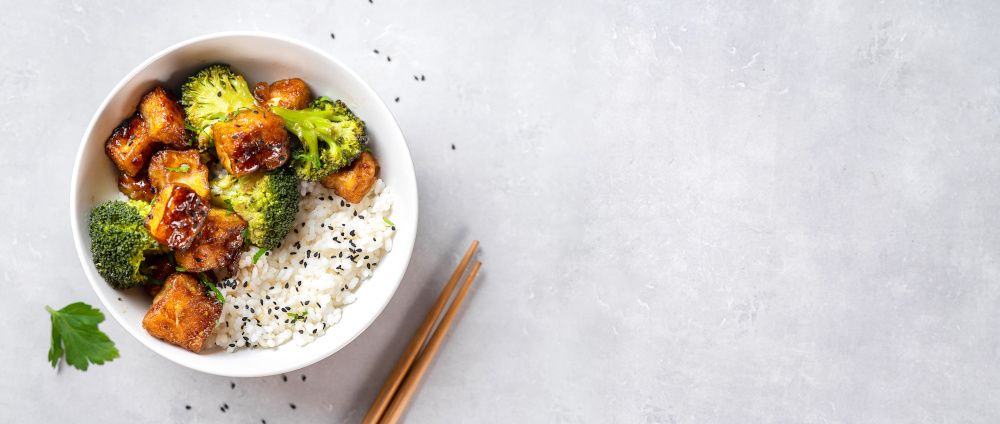Classic meat alternatives: Vegan staples like tofu and tempeh are still popular
Products like tofu and tempeh may not get the same press as flashier meat alternatives, but they still play a prominent role in the plant-based diet.
If you’ve read Nutritional Outlook’s June 2022 story on meat and dairy alternatives1, you may know that a large portion of its discussion is dedicated to products that very skillfully replicate existing meat and dairy products. These products have been an important part of increasing acceptance of plant-based alternatives beyond vegetarian and vegan demos. However, that story does not address just how diverse the market for plant-based meat and dairy alternatives really is. So many products on the market can be credited with making a plant-based lifestyle possible, as well as innovating and helping create the level of choice we see today.
In fact, while products like the Impossible Burger are getting a lot of buzz, it’s the OG vegan products that remain among the most popular. For example: “Seitan is the most popular base ingredient appearing in plant-based meat conversations in social media,” explains Pradeep Srinivasan, a consultant at Spoonshot (Saint Paul, MN), a market research firm that leverages artificial intelligence to make predictions for consumer needs, trends, and innovation opportunities. “[Seitan] is made out of gluten, the vital protein of wheat, and contains 75 g of protein per 100 g. It has nine times more protein than tofu and four times more protein than tempeh. It contains roughly the same amount of protein as animal meat and is a good source of several minerals.”
Other ingredients—in order of higher consumer acceptance to lowest—that are consistently mentioned in plant-based meat conversations include mushroom, chickpea, soybean, tofu, and jackfruit. Seitan scores the lowest among these on Spoonshot’s proprietary measure of consumer acceptance, but its popularity in social media conversations indicate the ingredient is growing in popularity. Indeed, the ingredient has deep cultural roots in Chinese, Japanese, and other East and Southeast Asian cuisines, so it may be getting a new audience in the West. However, its positioning could also indicate that maybe consumers want something gluten-free instead.
In Spoonshot’s analysis of the food and beverage landscape, the top protein sources for plant-based meat products currently used are soy, pea, rice, wheat, and shitake. Given the amount of potential protein sources out there, however, the possibilities for product development in the plant-based meat space are vast. Even with the growing popularity of meat-like plant-based products, one should not ignore the staple products like tofu or tempeh, for example. They still maintain popularity and a devoted consumer base.
“We have not found any evidence that suggests these products are not popular or successful. In fact, Spoonshot’s analysis of plant-based and vegan conversations in social media indicate that 2% are linked to tofu and tempeh,” says Srinivasan. “Further, tofu and tempeh account for 0.4% of all food-related social media conversation.”
Consumers are, however, concerned about allergens and clean-label positioning. Therefore, products with soy, like tofu, may be falling out of favor. But this presents new opportunities.
“There is a lot of innovation taking place in this space with tofu alternatives becoming more popular, as highlighted in Spoonshot’s Gamechangers report,” explains Srinivasan. “Tofu tends to be the go-to plant protein for many consumers mainly because of its relatively easy availability, but soy is an allergen for many people, while others want to limit its consumption or just don’t like the taste or texture of tofu. As a result, companies are experimenting with chickpea and peas as alternatives to tofu.”
This is similar in the case of plant-based cheeses. According to Spoonshot, nuts such as cashews and almonds as well as pecans and walnuts are among the most popular bases for plant-based cheese, but concerns about allergens create markets for alternatives.
“Seeds are also becoming popular as the base for plant-based cheese, especially for consumers with nut allergies. Some of the longtail ingredients for plant-based cheese from recipes include sunflower seeds, hemp seeds, white sesame seeds, and pumpkin seeds,” says Srinivasan. “Apart from nuts and seeds, ingredients like cauliflower and broccoli are used in making cheesy sauces to incorporate into dishes like mac and cheese pasta.”
The “old guard” clearly still has a prominent place in the plant-based food and dairy space, but as more consumers entering the vegetarian and vegan category come to expect clean-label positioning on their products, updates to classics can present an opportunity for manufacturers.
Reference
- Krawiec S. “Food’s Animal-Free Future: Meat and Dairy Alternatives Are Growing More Sophisticated to Court More Consumers.” Nutritional Outlook. Published online June 21, 2022.

Prinova acquires Aplinova to further increase its footprint in Latin America
April 7th 2025Prinova has recently announced the acquisition of Brazilian ingredients distributor Aplinova, which is a provider of specialty ingredients for a range of market segments that include food, beverage, supplements, and personal care.
























